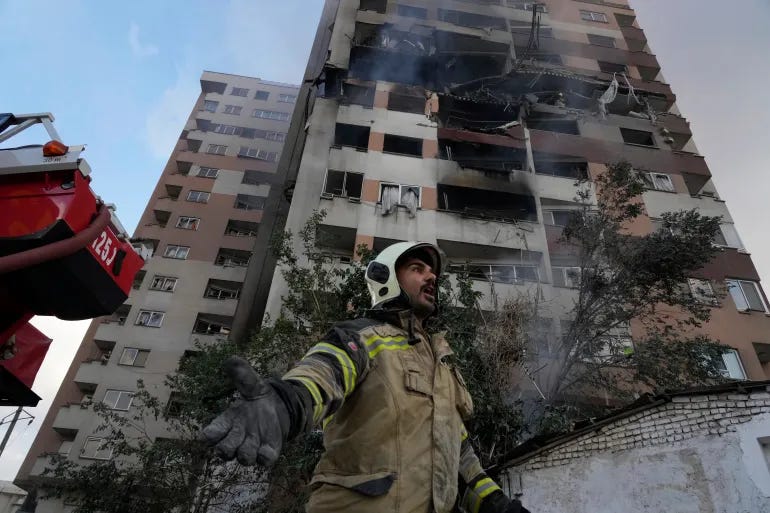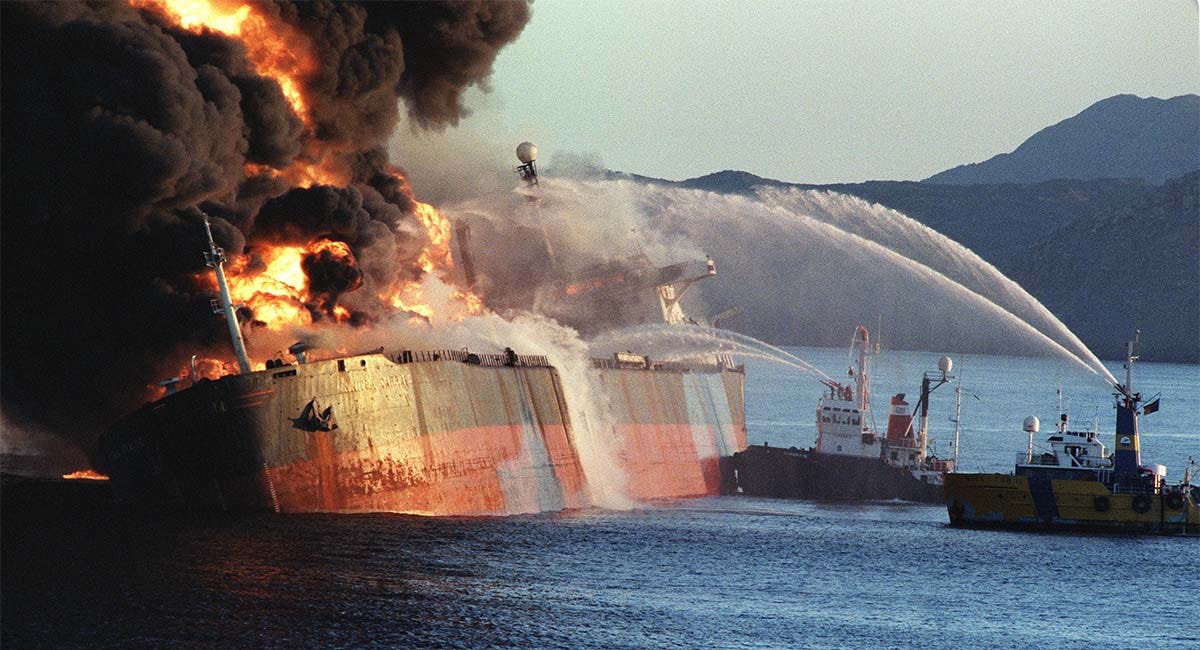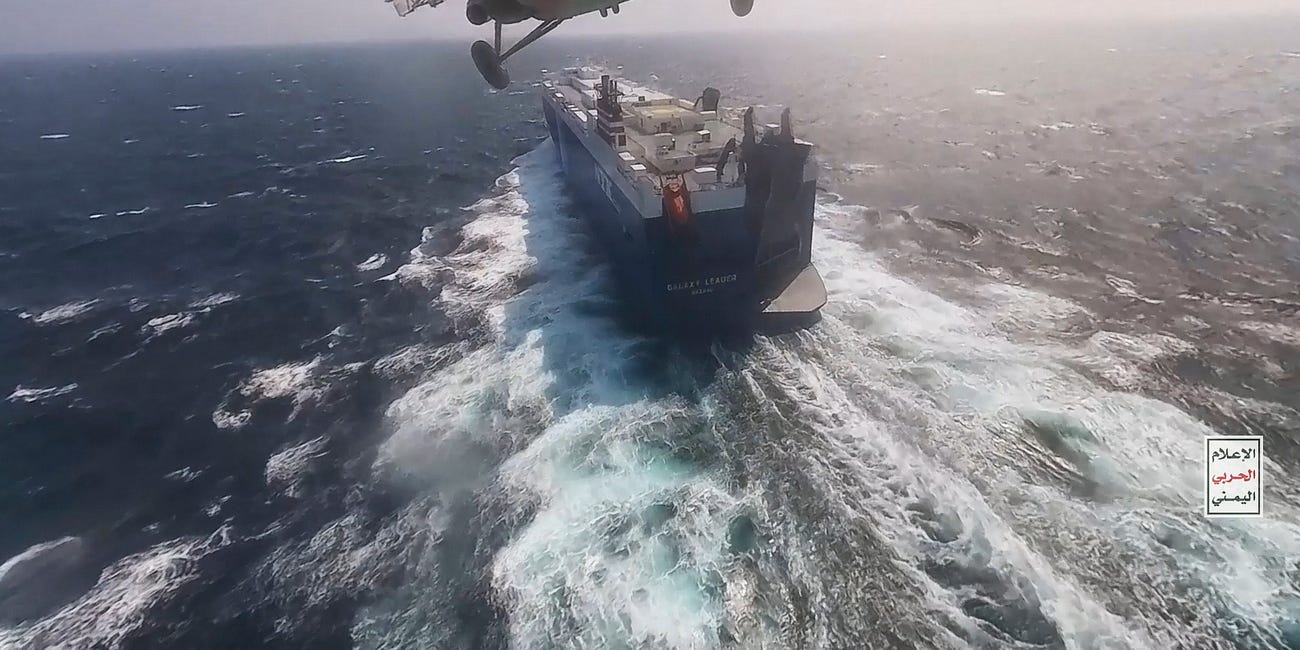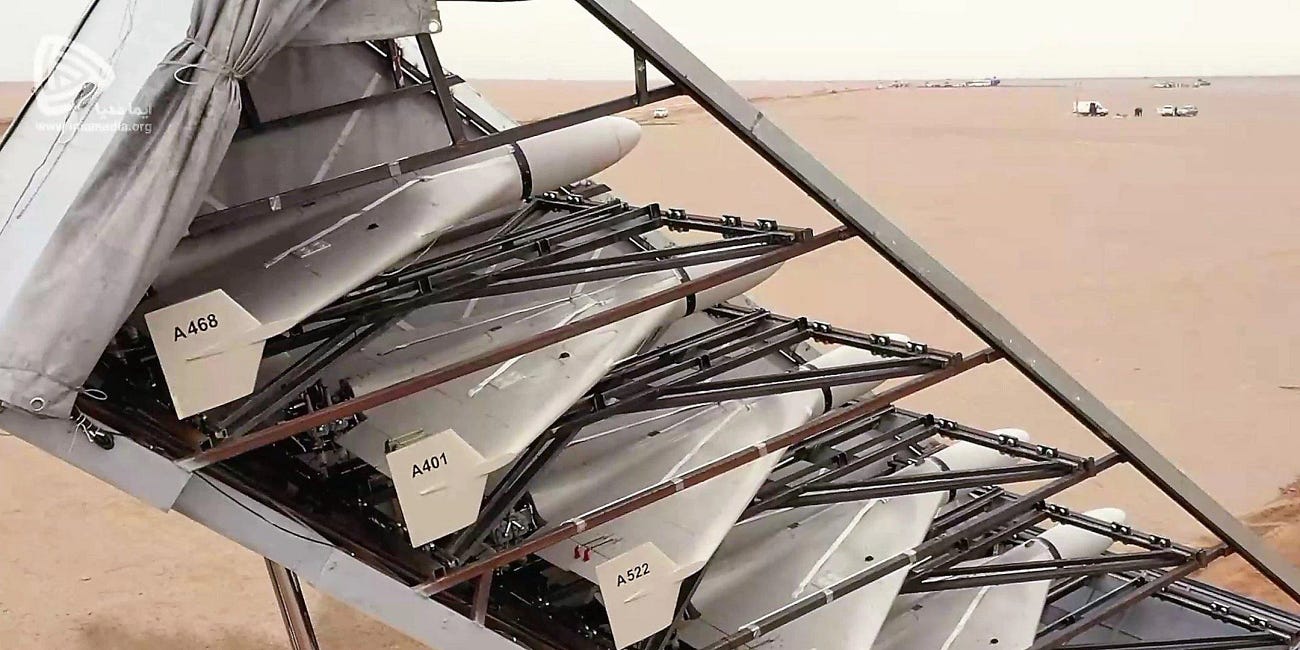Israel’s Massive Airstrike on Iran: What It Means for Markets, Escalation Risks, and Nuclear Talks
Over 200 Israeli warplanes struck key Iranian targets—raising fears of wider conflict, oil shocks, and the collapse of nuclear diplomacy.
Tehran is reporting that several apartment blocks have been hit in the attack, likely in the attempted assassination of high-level targets. Image source
I received news of Israel’s attack on Iran just as I was going to bed last night. Here’s what we know so far and my analysis on what’s may be on the horizon. Here’s what I’ve gathered:
What happened: On 13 June 2025, Israel launched Operation “Rising Lion”, a large-scale pre-emptive strike on Iran’s nuclear and military infrastructure .
Aircraft & Sabotage Elements: Over 200 Israeli aircraft, including F-16s and F-35I “Adirs” dropped more than 330 munitions across five strike waves.
Mossad covert operations assisted in the strikes, including embedded nodes, precision weapons, and drone sabotage against Iranian air defenses .
Sites targeted: Approximately 100 sites in several places — including in the capital, Tehran, the main Natanz nuclear enrichment facility near Isfahan, missile factories, radar systems, IRGC bases, and high-ranking officers’ private residences .
Casualties: Iranian state media and Western intelligence report at least 78+ killed and 329+ injured, notably killing top Iranian Revolutionary Guard Corps (IRGC) officials such as Hossein Salami, Mohammad Bagheri, Gholam Ali Rashid, Amir Ali Hajizadeh, Quds Force leader Esmail Qaani, and multiple nuclear scientists.
U.S. Response: Amid rising tensions, the U.S. has evacuated non-essential staff from embassies in Iraq, Bahrain, and Kuwait, repositioned two destroyers to the Eastern Mediterranean, increased regional fighter patrols, and raised troop alert levels to 40,000.
Market Response
Oil prices spiked: Brent crude jumped ~12% (peaking near $78.50/bbl), later stabilising around $73–75 .
Market dynamics: Traders noted resilience due to the absence of oil-infrastructure targets, though the risk premium remains elevated .
Broader effects: Surging safe-haven demand drove gold and USD strength, while U.S. equity futures dipped .
Low Chance of Hormuz Closure at This Time
Iran has threatened shutting the Strait, a key oil chokepoint, but full closure remains unlikely—notably due to the strategic presence of the U.S. Fifth Fleet .
Market view: Analysts are cautious but see the current risk as moderate; a closure would elevate oil prices well above $100/bbl, though U.S. and OPEC+ capacity buffers would cushion the blow .
Worth noting: Around a third of global energy exports transit the Hormuz Strait each day. If closed, the damage to global markets will be catastrophic, particularly in East Asia, which rely heavily on heavy sour crude and LNG from the region.
If It Escalates: Israeli Targets First, Then U.S. Military
Iranian intent: Tehran threatened retaliation targeting Israeli military and civilian installations, followed by U.S. bases in the region.
Regional risk path: Should escalation continue, expect an initial wave aimed at Israel’s military infrastructure, with U.S. interests as subsequent potential targets—heightening risk for Western personnel.
Hard to Say if Iran Nuclear Deal Can Be Salvaged
Diplomatic impact: Iran has cancelled planned nuclear talks this weekend, with Tehran stating negotiations are no longer viable .
Trump’s position: U.S. President Trump urged Iran to “make a deal,” but with Israeli air strikes underway, prospects for meaningful diplomacy are dim .
Outlook: With talks paused and mutual suspicion high, chances of reviving any nuclear framework appear low in the near term. However, with a reformist in office in Tehran, there may be a small chance of salvaging these as Iran is likely desperate to avoid a full-scale war.
Conclusion
This unprecedented Israeli air campaign—combining conventional and covert elements—marks a dramatic escalation in the Israel–Iran conflict. While short-term market impact has been significant, the Strait of Hormuz remains open, and oil markets are holding steady. Nonetheless, the pathway to further escalation toward U.S. assets looms if Iran retaliates in kind. Crucially, nuclear diplomacy is now in jeopardy, with scheduled talks cancelled and prospects bleak.
Bottom line: Markets are adapting to initial shocks, but the situation remains fragile. Key indicators to monitor:
Iran’s next moves targeting Israel or U.S. interests
Any disruption to oil flows or passage through Hormuz
Renewal—or permanent collapse—of nuclear diplomacy
To understand this deeper, take a look at some of my previous articles:
Iranian Nexus: How Sectarianism furthers Tehran’s Grand Strategy
The Singapore-flagged Norman Atlantic in the Strait of Hormuz after an Iranian attack in the 1987 Tanker War. Just one of many scenarios that could occur in the event of a broader escalation today. Source
Red Sea Shutdown: Why Houthi Attacks are Here to Stay
A Houthi forces helicopter approaches the Galaxy Leader on November 19. Source
Beware Iran’s Military-Industrial Complex: How Tehran is Changing the Nature of Asymmetric Warfare
Iranian Shahed-136 kamikaze drones stacked and ready to launch. Each unit costs as little as $20,000. Source







I was waiting for “Between the Lines” take on this development. Your expertise on reporting and consequences there in is always excellent, eye opening, and thought provoking. Thank you!
Thanks for the prompt reporting, can’t wait to dig into it. Have to say I was very surprised at the suddenness and scale